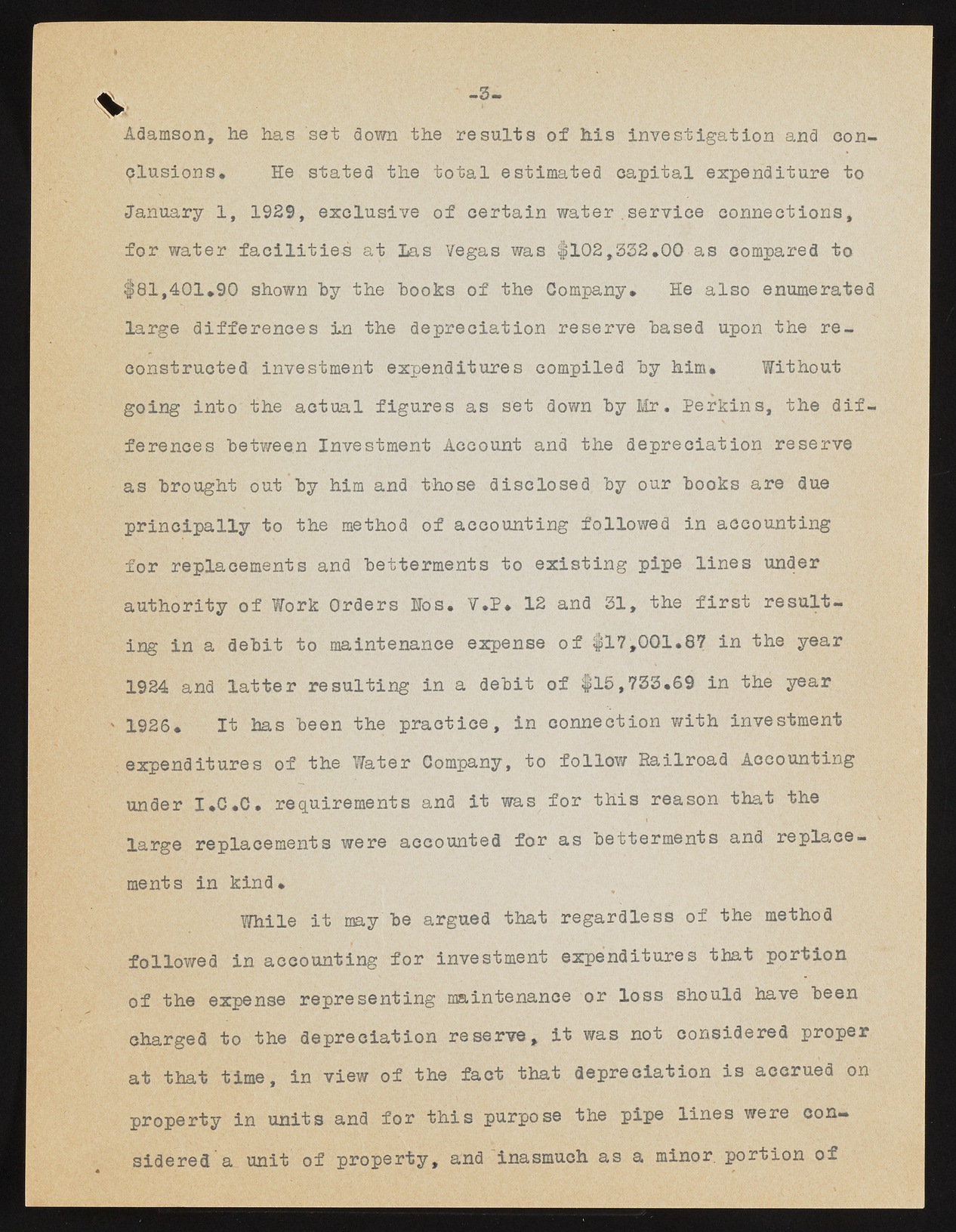Copyright & Fair-use Agreement
UNLV Special Collections provides copies of materials to facilitate private study, scholarship, or research. Material not in the public domain may be used according to fair use of copyrighted materials as defined by copyright law. Please cite us.
Please note that UNLV may not own the copyright to these materials and cannot provide permission to publish or distribute materials when UNLV is not the copyright holder. The user is solely responsible for determining the copyright status of materials and obtaining permission to use material from the copyright holder and for determining whether any permissions relating to any other rights are necessary for the intended use, and for obtaining all required permissions beyond that allowed by fair use.
Read more about our reproduction and use policy.
I agree.Information
Digital ID
Permalink
Details
More Info
Rights
Digital Provenance
Publisher
Transcription
* Adamson, lie has set down the results of his investigation and conclusions* He stated the total estimated capital expenditure to January 1, 1929, exclusive of certain water .service connections, for water facilities at las Vegas was #102,332*00 as compared to §81,401*90 shown "by the hooks of the Company* He also enumerated large differences in the depreciation reserve based upon the reconstructed investment expenditures compiled by him* Without going into the actual figures as set down by Mr. Perkins, the differences between Investment Account and the depreciation reserve as brought out by him and those disclosed by our books are due principally to the method of accounting followed in accounting for replacements and betterments to existing pipe lines under authority of Work Orders Hos. V.P* 12 and 31, the first resulting in a debit to maintenance expense of #17,001.87 in the year 1924 and latter resulting in a debit of #15,733*69 in the year ' 1926* It has been the practice, in connection with investment expenditures of the Water Company, to follow Bailroad Accounting under I*C.C. requirements and it was for this reason that the large replacements were accounted for as betterments and replacements in kind* While it may be argued that regardless of the method followed in accounting for investment expenditures that portion of the expense representing maintenance or loss should have been charged to the depreciation reserve, it was not considered proper at that time, in view of the fact that depreciation is accrued on property in units and for this purpose the pipe lines were considered a unit of property, and inasmuch as a minor, portion of

